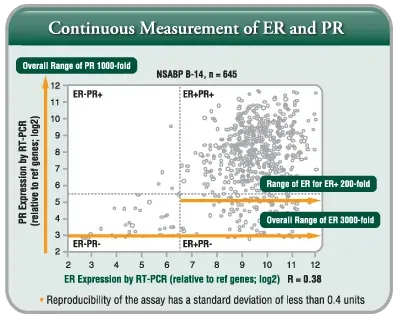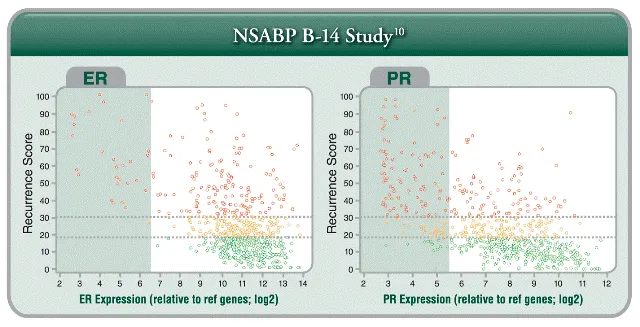ER and PR
ER/PR status is critical in determining the use and estimating the benefit of adjuvant hormonal therapy. Breast cancers show a broad range of hormone receptor expression, and RT-PCR is able to accurately convey this continuum. RT-PCR is able to measure ER and PR as a continuous distribution of gene expression over a 3,000-fold and 1,000-fold range, for ER and PR, respectively.
A quantitative ER Score can provide further insight into treatment decisions by helping to determine the magnitude of tamoxifen benefit for an individual patient (the higher the ER score, the greater the likelihood of tamoxifen benefit).

*Data on file from Paik et al, NEJM, 12/30/2004.
The Oncotype DX assay determines ER and PR status (positive or negative) by measuring gene expression at the RNA level. There is a high concordance between ER and PR status as determined by the Oncotype DX assay and by immunohistochemistry (IHC), which measures ER and PR gene expression at the protein level.
Studies were performed with ECOG (E2197 study, 769 patient samples) and Northern California Kaiser Permanente (607 patient samples):

The Recurrence Score result can be either low or high for high ER levels. The Recurrence Score result combines the ER level (related to response to tamoxifen) with the expression of other genes. The Recurrence Score result is a better predictor of distant recurrence at 10 years given 5 years of tamoxifen therapy in the ER+ population than ER/PR status is alone.










